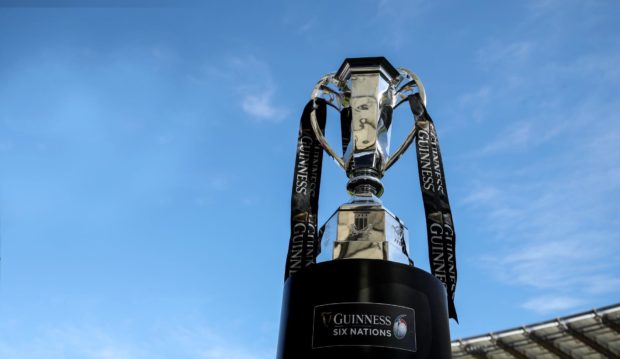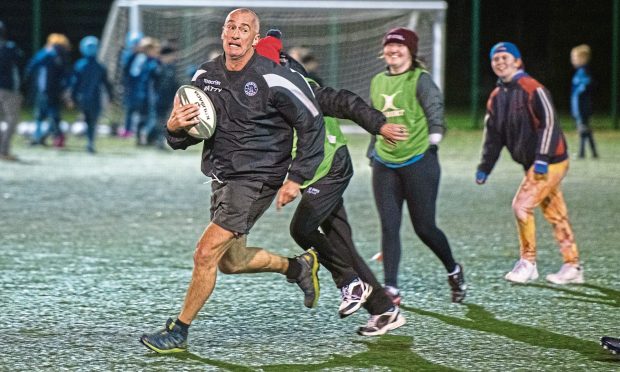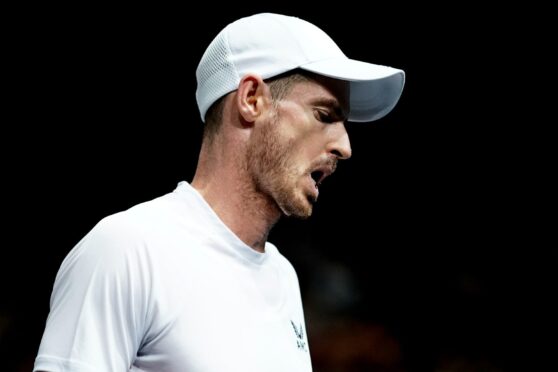This damned pandemic. At this point as January ticks into February, the excitement should be building to fever pitch as the Six Nations opens.
Instead, I can’t think over 25 years of a championship – even a rugby game – I’ve looked forward to least. The Autumn Nations Cup was a miserable attempt at fashioning a tournament in the middle of a worldwide health scare, and it was really just the Six Nations with Georgia bolted on.
As I wrote previously in these pages, the championship should have been postponed until summer – at least.
The fans entirely make the Six Nations. As Gregor Townsend has correctly identified, their fervour, noise and excitement covers up the fact that the quality of rugby is sometimes lacking. In empty stadia, the rugby in the ANC was exposed as turgid.
France will try and play a little this spring, Italy should certainly try to. But even with Finn Russell back (a small mercy for those of us who actually like fun) the home nations have apparently decided that the ball will spend much more time in the air than in players’ hands.
Only wins, no matter how dully gained, are what counts, says Gregor. But playing dull rugby doesn’t get wins consistently over England, France and Ireland, which is the obvious next step in Scotland’s evolution.
By all means be “tough to beat” and defend competently. But “lifting the nation” surely means quickening the blood on occasion as well.
Anyway, here’s a quick summation of where the Six Nations stand going into the Championship:
England
Your England squad for the 2021 #GuinnessSixNations 🌹
We kick off our campaign against @Scotlandteam at Twickenham Stadium on 6 Feb 🏴🏴
More details ⤵️#WearTheRose
— England Rugby (@EnglandRugby) January 22, 2021
They won both competitions played for in 2020, but didn’t feel like champions either time. There’s been a sudden spate of injury and unavailability issues. Eddie Jones has been isolating during almost all of the build-up.
Yeah, the idea that England are vulnerable – especially on Saturday – is the customary pre-championship wishful thinking without any real evidence to back it up.
Their cab rank for every single position is miles long. They lost only in Paris last year, and tough out results better than anyone. And they have Maro Itoje, the best forward in the game.
France
🏆 Début d'un nouveau chapitre !
Voici le groupe des 37 joueurs convoqués pour le Tournoi des @SixNationsRugby 2021 !
📅 Les Tricolores se retrouveront le 24 janvier pour préparer le premier match contre l'Italie – @Federugby le 6 février !#NeFaisonsXV #XVdeFrance pic.twitter.com/KTzov7LRuj
— France Rugby (@FranceRugby) January 11, 2021
Should be favourites, given their second choice team probably deserved to beat England in the ANC final. But for one outlier at Murrayfield, they were clearly the best team in 2020, but somehow England carried off the trophies.
Romain N’Tamack and Viri Vakatawa will miss the entire championship. But France have able replacements, a monster pack, and the best player in the world right now in Antoine Dupont.
They’ll have been the most studied team over December and January. It’ll be interesting to see what counter measures the head coaches came up with.
Ireland
📄 𝗦𝗶𝘅 𝗡𝗮𝘁𝗶𝗼𝗻𝘀 𝗦𝗾𝘂𝗮𝗱 𝗔𝗻𝗻𝗼𝘂𝗻𝗰𝗲𝗺𝗲𝗻𝘁 🟢
Head Coach Andy Farrell has named a 36-man Ireland squad for the upcoming #GuinnessSixNations, including uncapped players Craig Casey and Tom O'Toole 🙌#ShoulderToShoulder #IrishRugby pic.twitter.com/wPrUwsT2K1
— Irish Rugby (@IrishRugby) January 25, 2021
Now that Scotland know their place again (thanks for the wisdom Eddie O’Sullivan), Ireland have to face their own “delusion”, that they’re any way competitive with England and France right now.
They’re certainly closer than Scotland and Wales, but their preferred grunt game has got zero change out of the big two recently. Ireland are finally starting to transition the Joe Schmidt championship teams though, with Caelan Doris and Ryan Baird coming through.
Jonny Sexton, rugby’s equivalent of NFL legend Tom Brady in effective longevity, keeps rolling along, but for how much longer?
Italy
I 3⃣2⃣ Atleti convocati per il primo raduno in preparazione all'esordio nel @SixNationsRugby 2021, a 📍Roma dal 28 gennaio ➡ https://t.co/VwlSScdynk#insieme #rugbypassioneitaliana pic.twitter.com/LaWrJpNFUB
— Italrugby (@Federugby) January 25, 2021
Talking of transition, Franco Smith has infused the Azzurri with youth, but what else was he going to do? The crusty veterans and half-competent “reliables” weren’t getting Italy anywhere.
Paolo Garbisi and Marco Zanon are two new bright sparks in the backs. A third, the more established Matteo Minozzi, has opted out due to Covid bubble fatigue, which is a significant blow.
The other issue is that the Italians still go pell-mell for an hour but can be reliably expected to fade and lose all resistance in the last 20 minutes. This has been the same for four to five years now, and it needs to change.
Scotland
ICYMI, Head Coach Gregor Townsend has named a 35-man squad for the 2021 Guinness Six Nations.
𝘊𝘭𝘪𝘤𝘬 𝘣𝘦𝘭𝘰𝘸 𝘧𝘰𝘳 𝘵𝘩𝘦 𝘧𝘶𝘭𝘭 𝘴𝘵𝘰𝘳𝘺.
— Scottish Rugby (@Scotlandteam) January 20, 2021
Gregor Townsend wanted Scotland to be difficult to beat, and it was more difficult in 2020. But they still lost twice in Dublin, and at home to France and England.
Only one of those was by more than a score, but defensive doggedness only gets you so far, especially if discipline is poor. Russell’s return and – potentially – the emergence of Cam Redpath offers some hope of something more.
But what am I doing? I have the endemic pre-championship optimism virus just like everyone else. It’ll be Duncan Taylor and Chris Harris in midfield and Scotland will try to edge England at a muscle game. Good luck with that.
Wales
Your 2021 #GuinnessSixNations squad. ⠀
⠀
😷 A photo for our times.⠀
⠀
𝙎𝙩𝙖𝙮 𝙝𝙤𝙢𝙚. 𝙋𝙧𝙤𝙩𝙚𝙘𝙩 𝙩𝙝𝙚 𝙉𝙃𝙎. 𝙎𝙖𝙫𝙚 𝙡𝙞𝙫𝙚𝙨⠀
⠀
🏴 #KeepWalesSafe ⠀ pic.twitter.com/1IGXiaYuTs— Welsh Rugby Union 🏉 (@WelshRugbyUnion) January 26, 2021
I noted that one august journal this week picked their “six players to watch” in the championship: Ellis Genge for England, Cam Woki for France, Garbisi for Italy, Redpath for Scotland, James Ryan for Ireland and…34 year old hooker Ken Owens for Wales.
Ken’s a great player and missed much of Wales’ troubles in 2020 through injury. But surely he’s only here to try and make a Lions swansong if he can (and if the tour goes ahead).
Wayne Pivac’s task taking over from Warren Gatland was nigh-on impossible to start with. But the biggest loss has been Gatland’s magic knack of turning players who were bang-average for their clubs into international monsters.


